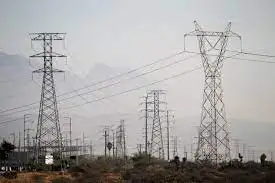UK National Grid Commissions 2GW Substation

Arc Flash Training CSA Z462 - Electrical Safety Essentials
Our customized live online or in‑person group training can be delivered to your staff at your location.

- Live Online
- 6 hours Instructor-led
- Group Training Available
UK 2-GW Substation strengthens National Grid power transmission in Kent, enabling offshore wind integration, voltage regulation, and grid modernization to meet rising electricity demand and support the UK energy transition with resilient, reliable infrastructure.
Key Points
National Grid facility in Kent that steps voltage, regulates power, and connects offshore wind to strengthen UK grid.
✅ Adds 2 GW capacity to meet rising electricity demand
✅ Integrates offshore wind farms into transmission network
✅ Improves reliability, voltage control, and grid resilience
The United Kingdom has strengthened its national power grid with the commissioning of a major new 2-gigawatt capacity substation in Kent. This massive project, a key part of the National Grid's ongoing efforts to modernize and expand power transmission infrastructure, including plans to fast-track grid connections across critical projects, will play a critical role in supporting the UK's energy transition and growing electricity demands.
What is a Substation?
Substations are vital components of electricity grids. They serve as connection points, transforming high voltage electricity from power plants to lower voltages suitable for homes and businesses. They also help to regulate voltage levels, and, where appropriate, interface with expanding HVDC technology initiatives, ensuring stable electricity delivery. Modern substations often act as hubs, supporting the integration of renewable power sources with the main electricity network.
Why This Substation Is Important
The new 2-gigawatt capacity substation is significant for several reasons:
- Expanding Capacity: It adds significant capacity to the UK's grid, enabling the transmission of large amounts of electricity to where it's needed. This capacity boost is crucial for supporting growing electricity demand as the UK shifts its energy mix towards renewable sources.
- Integrating Renewables: The substation will aid in integrating substantial amounts of offshore wind power, as projects like the Scotland-England subsea link illustrate, helping the UK achieve its ambitious clean energy goals. Offshore wind farms are a booming source of renewable energy in the UK, and ensuring reliable connections to the grid is essential in maximizing their potential.
- Future-Proofing the Grid: The newly commissioned substation helps bolster the reliability and resilience of the UK's power transmission network, where reducing losses with superconducting cables could further enhance efficiency. It will play a key role in securing electricity supplies as older power plants are decommissioned and renewable energy sources become more dominant.
A Landmark Project
The commissioning of this substation is a major achievement for the National Grid, amid an independent operator transition underway in the sector, and UK energy infrastructure upgrades. The sheer scale of the project required extensive planning and collaboration with various stakeholders, underscoring the complexity of upgrading the nation's power grid to meet future needs.
The Path Towards a Cleaner Grid
The new substation is not an isolated project. It is part of a broader, multi-year effort by the National Grid to modernize and expand the country's power grid. This entails building new transmission lines and urban conduits such as London's newest electricity tunnel now in service, investing in storage technologies, and adapting infrastructure to accommodate the shift towards distributed energy generation, where power is generated closer to the point of use.
Beyond Substations
While projects like the new 2-gigawatt substation are crucial, ensuring a successful energy transition requires more than just infrastructure upgrades. Continued support for renewable energy development, highlighted by recent offshore wind power milestones that demonstrate grid-readiness, investment in emerging energy storage solutions, and smart grid technology that leverages data for effective grid management are all important components of building a cleaner and more resilient energy future for the UK.











